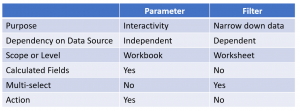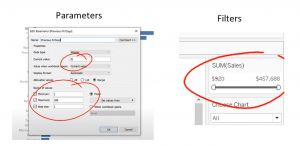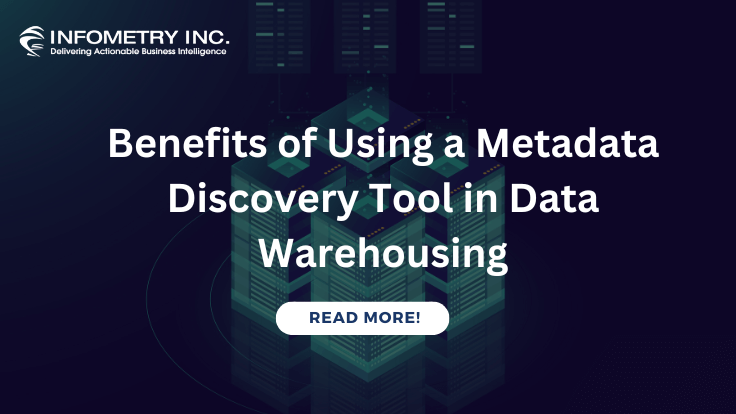
Introduction to MuleSoft’s RAML API Modelling Language
November 2, 2022
Top 5 Reasons to Choose MuleSoft over Your Old Integration Platform
November 18, 2022Filters and parameters are built in Tableau to view the data based on endless conditions that can shift as per your necessities. The following are a few essential differences between filters and parameters.

Adding to the differences, if like to dig deeper, here:
Filter Actions
Tableau Filters benefit associations as they assist them with presenting insightful data to clients and business stakeholders. This data is introduced as a worksheet or a dashboard. This facilitates better decision-making in business. The tableau filters can filter out sensitive information and share it only with those with access authority.
Advantages
Filter actions are best utilized when the client should connect with a separate sheet that acts as the “control.” Instances of this might be a text table that lists product categories or a bar chart that rundowns marketing projections. For this situation, the client might need to see other data about specific marks in these worksheets. By setting up filter actions, users can filter different worksheets in a dashboard by choosing the essential marks.
Filter actions address the issue introduced by worldwide quick filters and the utilization of various datasets. Even if all the worksheets in a dashboard utilize different datasets, filter actions permit the analyst to assign connections between two fields in various datasets. Analysts can give a single field connection, multipleareas, or all domains.
An illustration of this may be a text table of product sales in each sales period. The user needs to see the different worksheets filtered by a particular product on the dashboard. In the product sales table, the user can CTRL-click the products they need to see, and the other worksheets will be separated appropriately. This might even work across dashboards.
Disadvantages
While filter actions permit the analyst to filter different datasets with a single click, it removes the types of ways the data can be filtered that quick global filters allow. The user should associate with the control worksheet to filter different sheets connected with it. A primary fast filter (not a worldwide one) that filters the control worksheet will not spread to other worksheets in the dashboard. For dashboards where a user should filter all worksheets by a given aspect, e.g., date or geological region, a worldwide fast filter or parameter would be better.

Parameters
The parameters in Tableau are the manual workbook factors like a number, date, or determined field that permits users to substitute a constant value in a calculation, filter, or reference line.
For instance, the user can make a new calculated area that returns True if the total marks are greater than 90% and return False if it is less than 90%. Users can replace the formula’s constant value of “90%” with the parameters in Tableau according to the necessities. With parameter control, users can dynamically vary the threshold values in their calculations.
Advantages
Parameters address the issues of worldwide quick filters and filter actions: they permit the user to utilize a single dropdown or list that affects all associated worksheets in a dashboard and allow the expert to interface the filter across datasets. They act as an independent filter that can then filter the different worksheets. We will not cover how to set them up (linked to above), but by using parameters, analysts have greater power over how their worksheets are filtered. If the data types match, filters on all worksheets can be constrained by a parameter.
Disadvantages
Unfortunately, parameters have their restrictions. Though quick worldwide filters have seven ways of being addressed on a dashboard, parameters have four. Parameters can’t make multiple selections in a filter, e.g., with a rundown of checkboxes, and they don’t have the “(All)” aggregate choice of quick filters. While the inability to choose numerous things in a filter can’t be evaded, the data can be organized to incorporate an “All” column that aggregates the relevant data for that mark. This isn’t ideal since the analyst should consider this while setting up their information in Tableau, but it is the only workaround we have encountered.
Conclusion
We have covered Tableau’s differentiation between filters and parameters and their strengths and weaknesses. As we continue to use Tableau in future projects, we hope to find solutions to some of the shortcomings of these filtering methods. If you have any questions or have a suggestion to work around the challenges we’ve written about, feel free to connect with Infometry!




